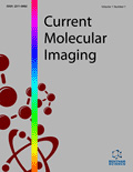Abstract
Background: Post-Traumatic Stress Disorder (PTSD) is an anxiety disorder in response to a major traumatic event. Higher levels of trauma may be associated with more deficits in the brain SERT availability. We investigated the in vivo dynamitic change of SERT availability in the brain of PTSD rat with increasing severity of disease with 4-[18F] ADAM PET which reflects the SERT availability.
Methods: Pavlovian fear conditioning model of PTSD was used in this study. Sprague-Dawley rats (N=6/group) were conditioned with 3, 6 and 10 tone-shock pairings at 1 min intervals, and the freezing responses was measured as the percentage of time spent in freezing during 1 min interval. Static PET imaging was performed in PTSD animals after administration of 2-(2-amino-4-[18F] -fluorophenylthio) benzylamine (4-[18F]-ADAM) (150 µCi/100µl, i.v.). One day later, the brains were removed and grounded for the quantitation of AMPA receptor trafficking.
Results: The conditioned 6 or 10 tone-shock pairings exhibited higher level of cue-evoked freezing behavior compared with 3 tone-shock pairings groups (p< 0.01). PET results showed that a positive correlations between SERT availability in the brain regions including amygdala, caudate/putamen, hippocampus, hypothalamus, midbrain, pituitary, frontal cortex and cerebellum in the groups of mild or moderate PTSD but a negative correlation in the severe group. The phosphorylation of GluR1 at Ser831 which were subunits of AMPA was dramatically increased in the amygdala and hippocampus of severe group compared with control group.
Conclusions: The results support that 4-[18F]-ADAM PET could be used to monitor the alteration of SERT availability associated with PTSD severity.
Keywords: PTSD, 4-[18F]-ADAM, serotonin transport.
Graphical Abstract
 26
26

